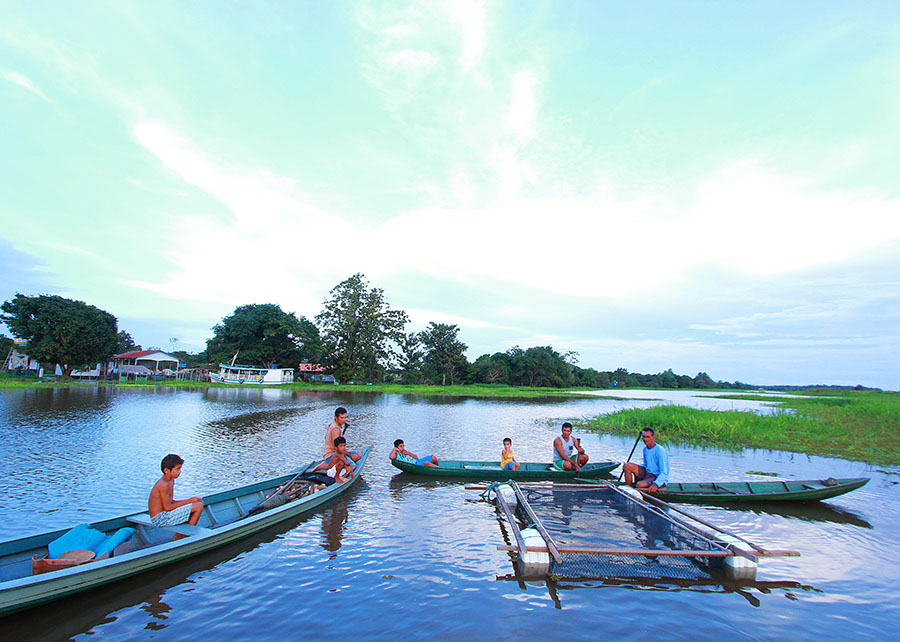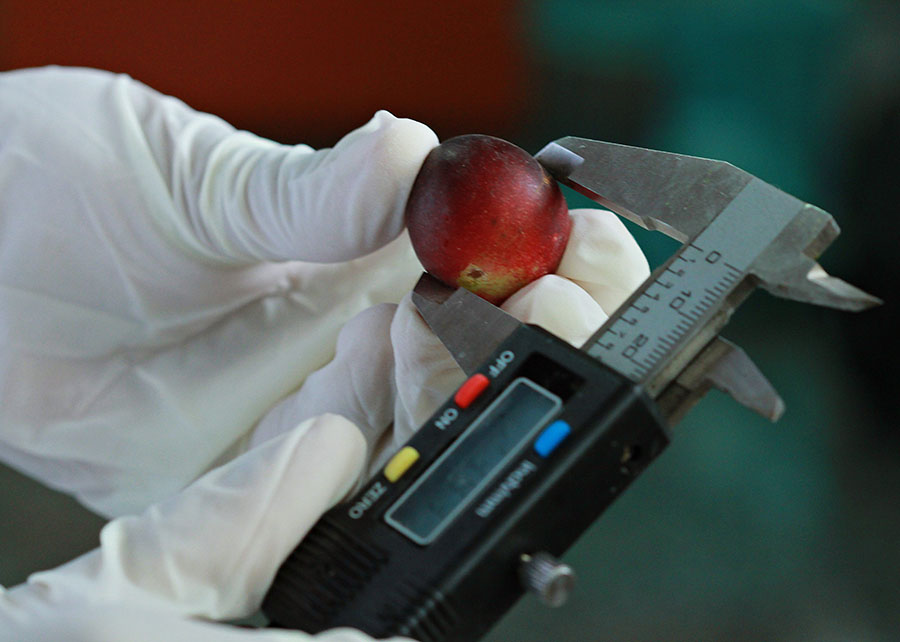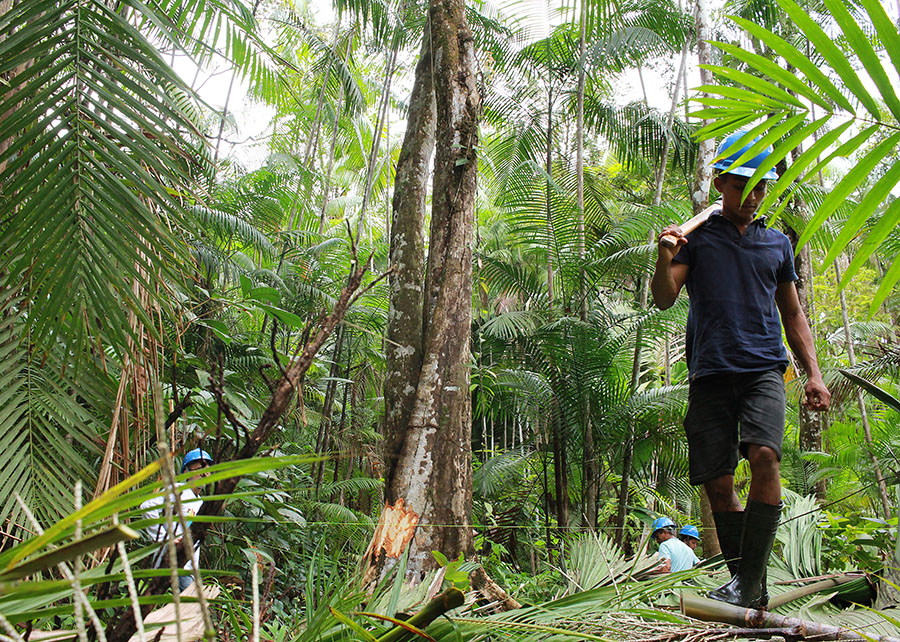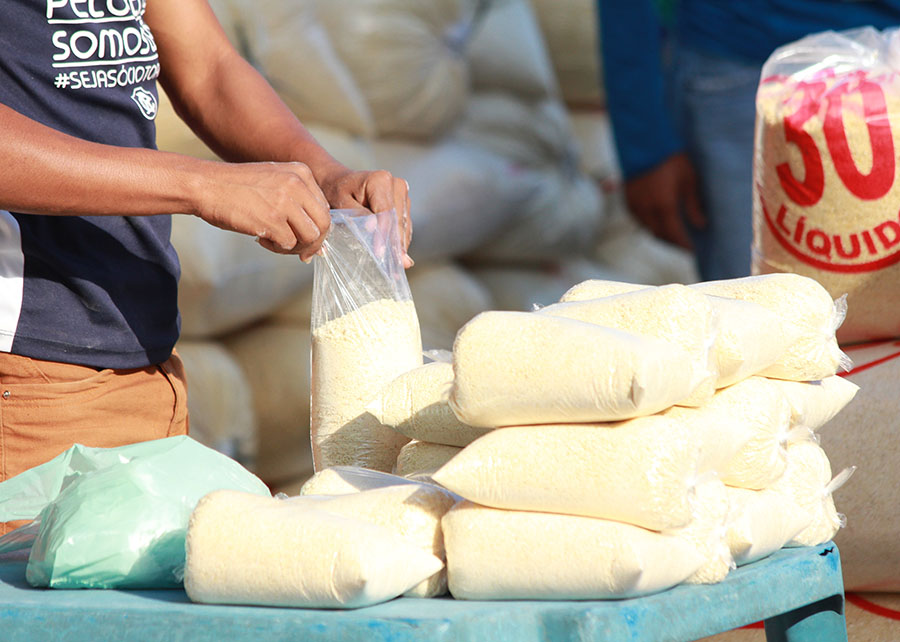The study published in Ecological Economics shows that the lack of a definition of the term bioeconomy can be harmful to the Amazon and its population. The group of researchers discussed the terms and concepts in use and evaluated their impact on decision-making on public policies for the development of the Amazon. The team points out that the bioeconomy is interpreted according to the needs and views of each country; therefore, they recommend the establishment of a consensus about the term and a standardized definition for all. The scientists contend that the term “bioeconomy” should be associated with the commitment to zero deforestation, social equity, and appreciation of local cultures and biodiversity. Biotechnology, bio-resources, biomass, biogas, biofuels, value-added biodiversity products, ecological economy… There are many terms, concepts, products and processes that involve what the scientific community is currently calling Bioeconomy. And it is this term breadth, or lack of clarity, that can endanger the sustainability of Amazonian ecosystems and populations, according to a study published in the international journal Ecological Economics. The paper "A lack of clarity on the bioeconomy concept might be harmful for Amazonian ecosystems and its people", which was authored by Brazilian and foreign scientists researching the Amazon, states that the bioeconomy is a broad term with different meanings that can adapt to different scientific, political and market agendas. "Nowadays bioeconomy can be anything, ranging from soybeans to the trade of non-timber products, and also involves monocultures like oil palm. Our goal was to draw attention to the need to better clarify the term and to establish strong principles that take Amazonian peoples and the maintenance of a healthy forest into account, so that investment efforts and policies target fair development for the region," states Joice Ferreira, a researcher from Embrapa Eastern Amazon and first author of the paper. For the Amazon countries and their diversity of regional contexts, the work recommends the term "sociobioeconomy" as one of the most appropriate approaches. "The term refers to the economy of the forest and its sociobiodiversity, the combination of biological and cultural diversity. The sociobioeconomy also considers biocultural diversity – the interaction between natural systems and human cultures – and indigenous, traditional and local economies based on the region's sociobiodiversity”, the scientist states. The use of the term, however, should be based on strict principles, such as the commitment to zero deforestation, social equity, and value appreciation of local cultures and biodiversity, as the paper states. The Amazon is the most biodiverse region in the world, home to the largest tropical rainforest on the planet, which is the center of global climate regulation, and has a population of about 30 million people. The region contains 59% of Brazil's territory, 70% of all continental protected areas and 83% of all indigenous lands in Brazil. Sociobiodiversity A concept that expresses the interrelationship between biological diversity and the diversity of sociocultural systems. It is the combination of all living organisms in nature, people, culture and traditions. Different concepts and narratives The group of researchers discussed the terms and concepts in use and evaluated their impact on decision-making on public policies for the development of the Amazon. The trajectory of the concept involves three views, according to the scientific literature: the biotechnological bioeconomy, focused on science-intensive technologies to increase environmental efficiency; the bioeconomy of bio-resources, which proposes increased productivity and land use intensification; and the bioeconomy focused on ecological processes that promote biodiversity, among other issues. For the Food and Agriculture Organization of the United Nations (FAO), for instance, bioeconomy is the “production, utilization, conservation and regeneration of biological resources – production, utilization, conservation and regeneration of biological resources – to provide sustainable solutions (information, products, processes and services) within and across all economic sectors, and enable a transformation to a sustainable economy”. For the European Commission, bioeconomy is a term “related to all primary production sectors that use and produce biological resources (agriculture, forestry, fisheries and aquaculture) and all economic and industrial sectors that use biological resources and processes to produce food, feed, bio-based products, energy and services”. Therefore, as the researcher asserts, the bioeconomy is thought of or addressed according to the needs or views of each country or region. “Reaching consensus on fundamental terms and principles is not just a matter of semantics. New fields of action are imbued with new visions and narratives that compete for resources, investments and public policy. This way, dominating narratives have the power to define future development strategies for the Amazon”, Ferreira says. Sociobioeconomy for the Amazon Because the term is ambiguous and unclear, the bioeconomy can also cause negative impacts on the environment depending on the approach. The researchers point to the example of the production of açaí berries (Euterpe oleracea Mart.), which is the most prominent product of the bioeconomy in the Amazon and the first to exceed a market value of US$1 billion in 2023, according to the Brazilian Institute of Geography and Statistics (IBGE). "While the production of the berry can promote conservation and local empowerment when it is properly managed, the quick expansion of the market has led to the overexploitation of floodplain forests in the Amazon estuary and the erosion of biodiversity," says Ima Vieira, a researcher from the Emílio Goeldi Museum, who also co-authored the paper. "The expansion of bioeconomy activities thus has the potential to drastically change the Amazon. Ensuring positive outcomes for people and nature will depend on strict safeguards. Firstly, the definitions and principles underlying a bioeconomy that brings benefits to society and the environment have to be standardized", the scientist postulates. For the Embrapa researcher Roberto Porro, who also co-authored the analysis, the use of the term bioeconomy has to be qualified, and make way for the alternative concept of sociobioeconomy. "This [sociobioeconomy] considers the position expressed by traditional peoples and communities, which are the protagonists of the forest economy, emphasizing equity and the generation of value from products of the Amazonian sociobiodiversity and agrobiodiversity", the scientist underscores. Porro adds that the multiple expressions of the Amazonian sociobioeconomy constitute an inclusive approach to bioeconomy, through which Embrapa aims to reposition operations in the region. The pillars of such approach comprise sustainable production systems, adding value to local knowledge and lifestyles, food security, equity, benefit sharing and poverty reduction. "The concept of sociobioeconomy can foster alternative economic systems, in contrast with a business-as-usual approach, as it is in line with the harmonious relations between indigenous, local and traditional communities and their environment", the paper states. But the authors argue that the term is based on the values of justice, ethics, social inclusion, biodiversity conservation, climate balance and traditional knowledge. Authors and institutions involved "A lack of clarity on the bioeconomy concept might be harmful for Amazonian ecosystems and its people" is authored by Joice Ferreira and Roberto Porro (Embrapa Eastern Amazon, Belém, Brazil); Emilie Coudel and Marie-Gabrielle Piketty (Centre de coopération internationale en recherche agronomique pour le développement, CIRAD, France); Ricardo Abramovay (University of São Paulo, Brazil); Jos Barlow (Lancaster Environment Centre, Lancaster University, United Kingdom); Rachael Garrett (University of Cambridge, United Kingdom); Alexander C. Lees (Manchester Metropolitan University, United Kingdom); Ima Vieira (Emílio Goeldi Museum, Belém, Brazil); and Kieran Withey (Federal University of Pernambuco, Recife, Brazil). Photo: Ronaldo Rosa
Photo: Ronaldo Rosa

The bioeconomy is interpreted according to the needs and views of each country or region
Biotechnology, bio-resources, biomass, biogas, biofuels, value-added biodiversity products, ecological economy… There are many terms, concepts, products and processes that involve what the scientific community is currently calling Bioeconomy. And it is this term breadth, or lack of clarity, that can endanger the sustainability of Amazonian ecosystems and populations, according to a study published in the international journal Ecological Economics.
The paper "A lack of clarity on the bioeconomy concept might be harmful for Amazonian ecosystems and its people", which was authored by Brazilian and foreign scientists researching the Amazon, states that the bioeconomy is a broad term with different meanings that can adapt to different scientific, political and market agendas. "Nowadays bioeconomy can be anything, ranging from soybeans to the trade of non-timber products, and also involves monocultures like oil palm. Our goal was to draw attention to the need to better clarify the term and to establish strong principles that take Amazonian peoples and the maintenance of a healthy forest into account, so that investment efforts and policies target fair development for the region," states Joice Ferreira, a researcher from Embrapa Eastern Amazon and first author of the paper.
 For the Amazon countries and their diversity of regional contexts, the work recommends the term "sociobioeconomy" as one of the most appropriate approaches. "The term refers to the economy of the forest and its sociobiodiversity, the combination of biological and cultural diversity. The sociobioeconomy also considers biocultural diversity – the interaction between natural systems and human cultures – and indigenous, traditional and local economies based on the region's sociobiodiversity”, the scientist states. The use of the term, however, should be based on strict principles, such as the commitment to zero deforestation, social equity, and value appreciation of local cultures and biodiversity, as the paper states.
For the Amazon countries and their diversity of regional contexts, the work recommends the term "sociobioeconomy" as one of the most appropriate approaches. "The term refers to the economy of the forest and its sociobiodiversity, the combination of biological and cultural diversity. The sociobioeconomy also considers biocultural diversity – the interaction between natural systems and human cultures – and indigenous, traditional and local economies based on the region's sociobiodiversity”, the scientist states. The use of the term, however, should be based on strict principles, such as the commitment to zero deforestation, social equity, and value appreciation of local cultures and biodiversity, as the paper states.
The Amazon is the most biodiverse region in the world, home to the largest tropical rainforest on the planet, which is the center of global climate regulation, and has a population of about 30 million people. The region contains 59% of Brazil's territory, 70% of all continental protected areas and 83% of all indigenous lands in Brazil.
Sociobiodiversity A concept that expresses the interrelationship between biological diversity and the diversity of sociocultural systems. It is the combination of all living organisms in nature, people, culture and traditions. |
 Different concepts and narratives
Different concepts and narratives
The group of researchers discussed the terms and concepts in use and evaluated their impact on decision-making on public policies for the development of the Amazon. The trajectory of the concept involves three views, according to the scientific literature: the biotechnological bioeconomy, focused on science-intensive technologies to increase environmental efficiency; the bioeconomy of bio-resources, which proposes increased productivity and land use intensification; and the bioeconomy focused on ecological processes that promote biodiversity, among other issues.
For the Food and Agriculture Organization of the United Nations (FAO), for instance, bioeconomy is the “production, utilization, conservation and regeneration of biological resources – production, utilization, conservation and regeneration of biological resources – to provide sustainable solutions (information, products, processes and services) within and across all economic sectors, and enable a transformation to a sustainable economy”. For the European Commission, bioeconomy is a term “related to all primary production sectors that use and produce biological resources (agriculture, forestry, fisheries and aquaculture) and all economic and industrial sectors that use biological resources and processes to produce food, feed, bio-based products, energy and services”.
Therefore, as the researcher asserts, the bioeconomy is thought of or addressed according to the needs or views of each country or region. “Reaching consensus on fundamental terms and principles is not just a matter of semantics. New fields of action are imbued with new visions and narratives that compete for resources, investments and public policy. This way, dominating narratives have the power to define future development strategies for the Amazon”, Ferreira says.
 Sociobioeconomy for the Amazon
Sociobioeconomy for the Amazon
Because the term is ambiguous and unclear, the bioeconomy can also cause negative impacts on the environment depending on the approach. The researchers point to the example of the production of açaí berries (Euterpe oleracea Mart.), which is the most prominent product of the bioeconomy in the Amazon and the first to exceed a market value of US$1 billion in 2023, according to the Brazilian Institute of Geography and Statistics (IBGE).
"While the production of the berry can promote conservation and local empowerment when it is properly managed, the quick expansion of the market has led to the overexploitation of floodplain forests in the Amazon estuary and the erosion of biodiversity," says Ima Vieira, a researcher from the Emílio Goeldi Museum, who also co-authored the paper.
"The expansion of bioeconomy activities thus has the potential to drastically change the Amazon. Ensuring positive outcomes for people and nature will depend on strict safeguards. Firstly, the definitions and principles underlying a bioeconomy that brings benefits to society and the environment have to be standardized", the scientist postulates.

For the Embrapa researcher Roberto Porro, who also co-authored the analysis, the use of the term bioeconomy has to be qualified, and make way for the alternative concept of sociobioeconomy. "This [sociobioeconomy] considers the position expressed by traditional peoples and communities, which are the protagonists of the forest economy, emphasizing equity and the generation of value from products of the Amazonian sociobiodiversity and agrobiodiversity", the scientist underscores.
Porro adds that the multiple expressions of the Amazonian sociobioeconomy constitute an inclusive approach to bioeconomy, through which Embrapa aims to reposition operations in the region. The pillars of such approach comprise sustainable production systems, adding value to local knowledge and lifestyles, food security, equity, benefit sharing and poverty reduction.
"The concept of sociobioeconomy can foster alternative economic systems, in contrast with a business-as-usual approach, as it is in line with the harmonious relations between indigenous, local and traditional communities and their environment", the paper states. But the authors argue that the term is based on the values of justice, ethics, social inclusion, biodiversity conservation, climate balance and traditional knowledge.
 Authors and institutions involved Authors and institutions involved
"A lack of clarity on the bioeconomy concept might be harmful for Amazonian ecosystems and its people" is authored by Joice Ferreira and Roberto Porro (Embrapa Eastern Amazon, Belém, Brazil); Emilie Coudel and Marie-Gabrielle Piketty (Centre de coopération internationale en recherche agronomique pour le développement, CIRAD, France); Ricardo Abramovay (University of São Paulo, Brazil); Jos Barlow (Lancaster Environment Centre, Lancaster University, United Kingdom); Rachael Garrett (University of Cambridge, United Kingdom); Alexander C. Lees (Manchester Metropolitan University, United Kingdom); Ima Vieira (Emílio Goeldi Museum, Belém, Brazil); and Kieran Withey (Federal University of Pernambuco, Recife, Brazil). Photo: Ronaldo Rosa |
Ana Laura Lima (MTb 1.268/PA)
Embrapa Eastern Amazon
Press inquiries
amazonia-oriental.imprensa@embrapa.br
Phone number: +55 91 99110-5115
Translation: Mariana Medeiros (13044/DF)
Embrapa's Superintendency of Communications
Further information on the topic
Citizen Attention Service (SAC)
www.embrapa.br/contact-us/sac/

 For the Amazon countries and their diversity of regional contexts, the work recommends the term "sociobioeconomy" as one of the most appropriate approaches. "The term refers to the economy of the forest and its sociobiodiversity, the combination of biological and cultural diversity. The sociobioeconomy also considers biocultural diversity – the interaction between natural systems and human cultures – and indigenous, traditional and local economies based on the region's sociobiodiversity”, the scientist states. The use of the term, however, should be based on strict principles, such as the commitment to zero deforestation, social equity, and value appreciation of local cultures and biodiversity, as the paper states.
For the Amazon countries and their diversity of regional contexts, the work recommends the term "sociobioeconomy" as one of the most appropriate approaches. "The term refers to the economy of the forest and its sociobiodiversity, the combination of biological and cultural diversity. The sociobioeconomy also considers biocultural diversity – the interaction between natural systems and human cultures – and indigenous, traditional and local economies based on the region's sociobiodiversity”, the scientist states. The use of the term, however, should be based on strict principles, such as the commitment to zero deforestation, social equity, and value appreciation of local cultures and biodiversity, as the paper states. Different concepts and narratives
Different concepts and narratives Sociobioeconomy for the Amazon
Sociobioeconomy for the Amazon

